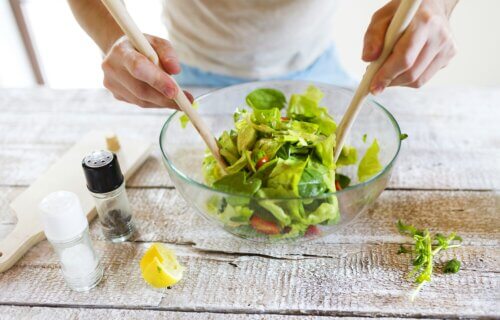If you take blood thinners, you’ve probably heard the outdated idea that dark leafy greens like kale and broccoli need to be cut out of the diet because they could possibly interact together in a dangerous way. However, it isn’t about never eating them — it’s about consistently eating them.
Who takes blood thinners and why?
They are actually anticoagulants, which patients can be put on for a variety of reasons. People who have atrial fibrillation (a-fib), are at risk of blood clots after surgery, have had a heart valve replacement, heart attack, or something similar may be prescribed them.
What do they have to do with vitamin K?
Blood thinners can interact with vitamin K because the body utilizes vitamin K to help promote blood clotting. Warfarin (also called Coumadin) is the most widely used blood thinner that blocks a vitamin K-dependent step during clotting factor production. For this reason, eating vitamin K consistently is important. The body needs a proper balance if both the vitamin and the medication. Still, not all blood thinners interact with vitamin K, so if you’re on one be sure to clarify with your physician.
Some people might be confused about what it means to eat vitamin K consistently while on drugs that interact with it. Essentially, this means not switching up your intake drastically from day to day. If you usually eat one serving of kale a few days per week, try to stick to that. Don’t start eating it much more frequently, and avoid consuming your amount inconsistently.
So which foods are good sources of vitamin K?
Some of the most notable include:
- Kale
- Spinach
- Brussels sprouts
- Cabbage
- Natto
- Turnip greens
- Mustard greens
It’s important to remember that vitamin K is still an important nutrient and shouldn’t be put to the side, even if you’re on a blood thinner. It’s a fat-soluble nutrient, meaning that eating foods that contain it with higher fat foods helps boost absorption. So for example, eating your kale salad with a sprinkle of cheese and olive oil dressing makes for the perfect pair!
What if I want to change my diet while on a blood thinner?
You may not typically eat vitamin K, but want to start including more vegetables in your diet while on blood thinners. For people who have just struggled with a major cardiovascular event or are getting used to a new diagnosis, this is a common sentiment.
The good news is that working with your doctor can help you monitor the average time it takes for your blood to clot over time as you make new changes and adjust your medication as needed. Increasing your vegetable intake whether it’s to diversify your diet or try new foods, can impact vitamin K and blood thinner interactions.
Bottom Line
It’s old news that you can never eat vitamin K-rich foods while on blood thinners. Dark leafy greens and other vegetables that are rich in it still have a valuable place in your diet. It’s more so important to let your doctor know about your dietary habits and any plans you have of changing things around while you’re on blood thinners.

While warfarin (Coumadin) is an off-patent, low-cost blood thinner and one of the few that can be reversed if needed, it is not the easiest to use, as this article describes. If you have good insurance, ask your doctor about other products that don’t have this problem. Some blood thinners do not depend on vitamin K1 for control, so you can eat a varied diet without worrying. The product I take is Apixaban, sold under the brand name Eliquis. It is reversible if needed. The big downside is cost.